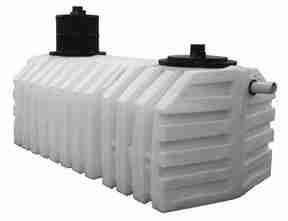About Septic Tank Emptying
Please visit our Emergency website for the latest home elevators openings and closings in Miami-Dade Region. Large general population sewer systems demand a monthly charge for their use, but provide convenience to the home owner of not having to keep up anything related to waste water outside of their home. Septic systems will be the responsibility of the property owner to maintain, but haven't any monthly fee, so can be usually less costly in the long run. However, some septic systems can be more expensive to maintain such as Low-Pressure Dose Systems that runs on the pump to go effluent to a drain field or conventional systems that don't percolate well and also have to be pumped frequently.
In areas with either shallow groundwater and/or where only a thin coating of free draining topsoil overlies less absorbent soils, the drainage receptacles may need to be installed fully or partially above the natural surface. This is to achieve the required groundwater clearances and/or to permit effluent to be dispersed into and become absorbed by adjoining soils.
Odors Inside- If you detect odor in the home, make sure that all P” traps, or drains, have water in them. Whenever a sink, shower, toilet, or even washer drain is not used for a long period of time, the in a trap can evaporate, allowing the septic gases to get into the house back again through the dried trap. The P snare was created specifically to hold normal water, forming a barrier for odor. Simply run normal water in the drain for a few minutes to cure a dry, or bare, trap. You should also check the seal (gasket) around the bottom of your toilets. A damaged seal can allow odors in to the home. You can replace the gasket yourself, or contact a plumber for service. Odors may be coming in from the roof covering vents, in which case you can purchase and mount charcoal filters.
With moving normal water, especially septic reservoir drinking water with some heat and natural activity, you don't have to be concerned about freezing issues with proper set up. Key is a well-bedded reservoir in lots of +/- 3/4 inches gravel. In frigid climates, install at least one foot of gravel under and around the settling tank to avoid sodden, frozen soil (frost) from touching the tank sides. In extremely wintry climates, the settling basin lid and adjoining area can be covered with tarp and 2 inches foamboard insulation and then buried at least one foot under finish grade. While possible to install a 12 inch or 18 inch extension to bury the settling basin deeper, it is not necessary or beneficial to bring the basin lid all the way to the top. Even in the warmest climates, you should at least cover the lid with mulch to protect plastic material from UV sunlight destruction and make it better to uncover when checking reservoir and filter annually.
The drainfield should disperse a septic tank's effluent. Many drain systems have some trenches that branch out from a syndication package. Some have a single, larger bed. Others have a seepage pit or a similar means of distributing tainted drinking water back into the bottom (the correct one for your home depends upon local rules, conditions, and practices).
Source: szamba-online.pl
In areas with either shallow groundwater and/or where only a thin coating of free draining topsoil overlies less absorbent soils, the drainage receptacles may need to be installed fully or partially above the natural surface. This is to achieve the required groundwater clearances and/or to permit effluent to be dispersed into and become absorbed by adjoining soils.
Odors Inside- If you detect odor in the home, make sure that all P” traps, or drains, have water in them. Whenever a sink, shower, toilet, or even washer drain is not used for a long period of time, the in a trap can evaporate, allowing the septic gases to get into the house back again through the dried trap. The P snare was created specifically to hold normal water, forming a barrier for odor. Simply run normal water in the drain for a few minutes to cure a dry, or bare, trap. You should also check the seal (gasket) around the bottom of your toilets. A damaged seal can allow odors in to the home. You can replace the gasket yourself, or contact a plumber for service. Odors may be coming in from the roof covering vents, in which case you can purchase and mount charcoal filters.
With moving normal water, especially septic reservoir drinking water with some heat and natural activity, you don't have to be concerned about freezing issues with proper set up. Key is a well-bedded reservoir in lots of +/- 3/4 inches gravel. In frigid climates, install at least one foot of gravel under and around the settling tank to avoid sodden, frozen soil (frost) from touching the tank sides. In extremely wintry climates, the settling basin lid and adjoining area can be covered with tarp and 2 inches foamboard insulation and then buried at least one foot under finish grade. While possible to install a 12 inch or 18 inch extension to bury the settling basin deeper, it is not necessary or beneficial to bring the basin lid all the way to the top. Even in the warmest climates, you should at least cover the lid with mulch to protect plastic material from UV sunlight destruction and make it better to uncover when checking reservoir and filter annually.
The drainfield should disperse a septic tank's effluent. Many drain systems have some trenches that branch out from a syndication package. Some have a single, larger bed. Others have a seepage pit or a similar means of distributing tainted drinking water back into the bottom (the correct one for your home depends upon local rules, conditions, and practices).

Source: szamba-online.pl